As the Superfine! Art Fair Prepares Its Los Angeles Launch, the Fair’s Plucky Founders Look Back on Their Achievements
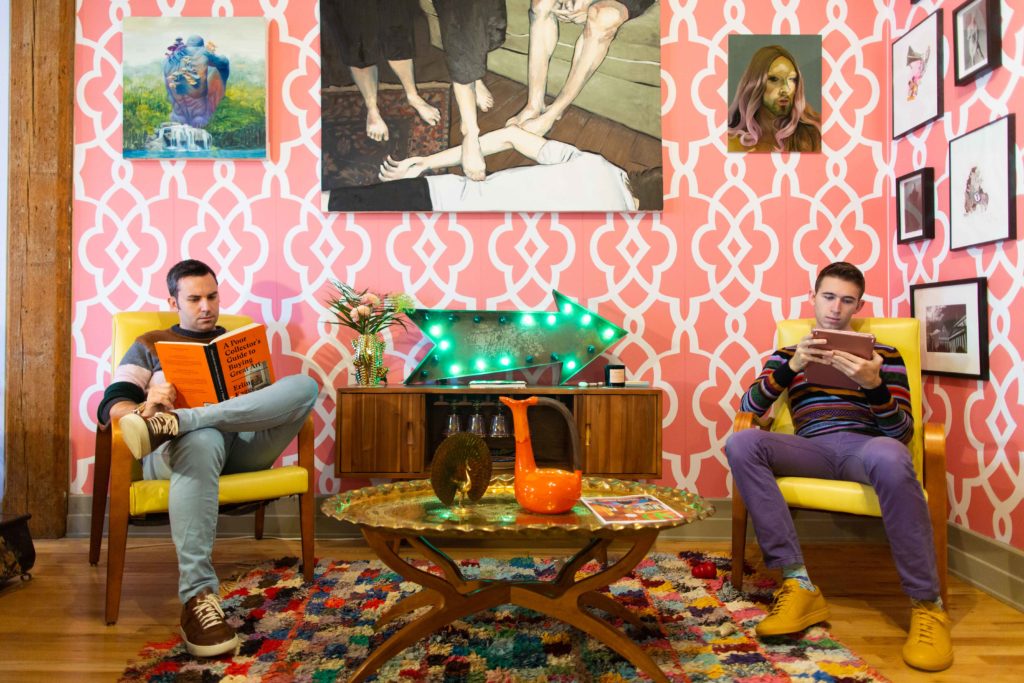

Artnet Gallery Network

Never trust a skinny chef, they say. In the art world, perhaps the lesson is: never trust a dealer with no art on his walls.
Alex Mitow and James Miille, the founders of the outside-the-box art fair, Superfine!, have no trouble here. It’s hard to find any free space on the walls of their spacious apartment in downtown Brooklyn, which is full of artworks the duo has collected over the years—largely from Superfine! fairs.
Since they founded the fair in 2015, their collection has grown immensely, from a couple of prints and vintage pieces to several hundred works of art by artists from all around the world. While encouraging others to ease into collecting through Superfine!, they themselves have evolved into bona fide collectors.
“A favorite saying of ours is that we help people cross the bridge from ‘art curious’ to ‘art collector,’” Mitow says. “A lot of fairs that specialize in accessible art stray away from the word ‘collector,’ but we like it. I get people who say, ‘Oh, I only have a few prints, I’m not a collector.” But I argue with them—you totally are! We want people who enjoy art to start to see themselves as collectors, and bring art into their lives on a daily basis.”
With this mission in mind, Superfine! was established in three art hubs around the country: Miami, New York, and, as of last fall, Washington, D.C. Now Mitow and Miille preparing for a fourth location: Los Angeles.
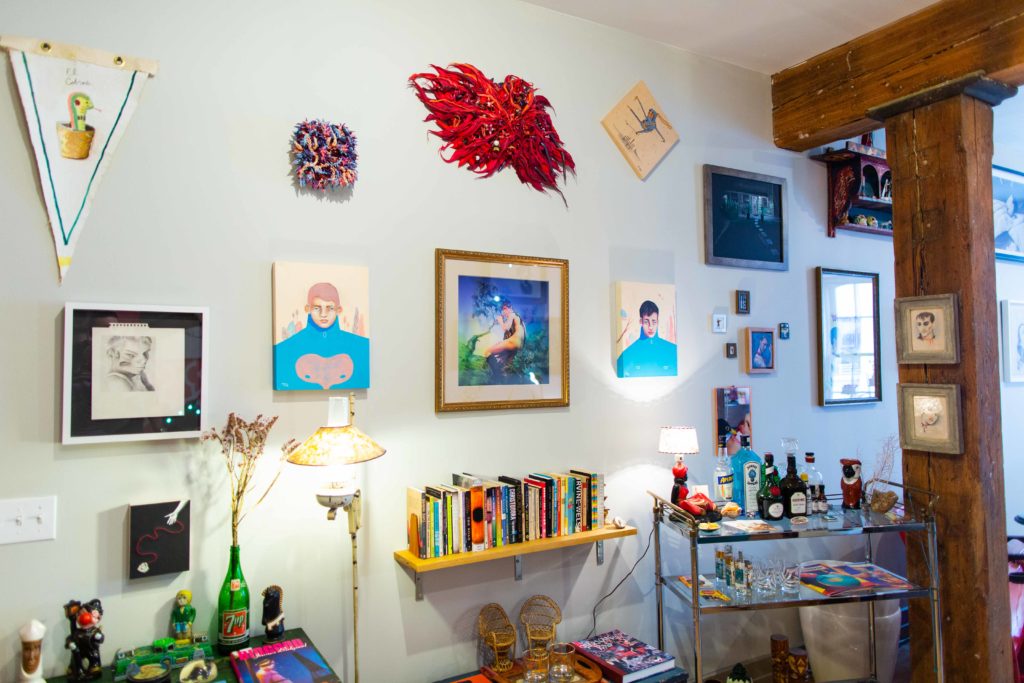
A wall in Mitow’s and Miille’s apartment with works by Peyton Freiman, Horacio Quiroz, Marina Font, Bran Sólo, James Bidgood, Seren Morey, and Martin Swift. Photo: James Miille.
Next month, Superfine! will kick off its inaugural West Coast edition. On view from February 14–17, the fair will bring the work of more than 250 artists to the Magic Box space in the City of Angels. Ninety percent of the work will be priced under $5,000, and payment plans are available in many instances. The fair will also feature a particularly strong focus on art that is from—and celebratory of—the LGBTQ community, something the founders feel is more important now than ever.
Starting a new location for a fair is always a challenge, but the plucky duo have already succeeded in the face of similar obstacles before. Perhaps most importantly, they have an impressive coterie of galleries around the world that will follow them wherever they go.
“They make the risk less scary,” says Alison Rogers, the co-owner of the BBAM! gallery in Montreal. “I love them,” adds Nicole Capozzi, co-founder of BoxHeart Gallery in Pittsburgh. Capozzi’s gallery has participated in three Superfine! fairs now, and was responsible for curating an exhibition at the first Washington, DC, fair last fall. “They’re transparent. They’re there, they say hello to you. They work with you. All the stuff all the fairs say they do, they actually do.”
Ahead of the Los Angeles fair, we spoke with Mitow about the pair’s collection, how they’ve built a community, and his sense of where the art world stands today.
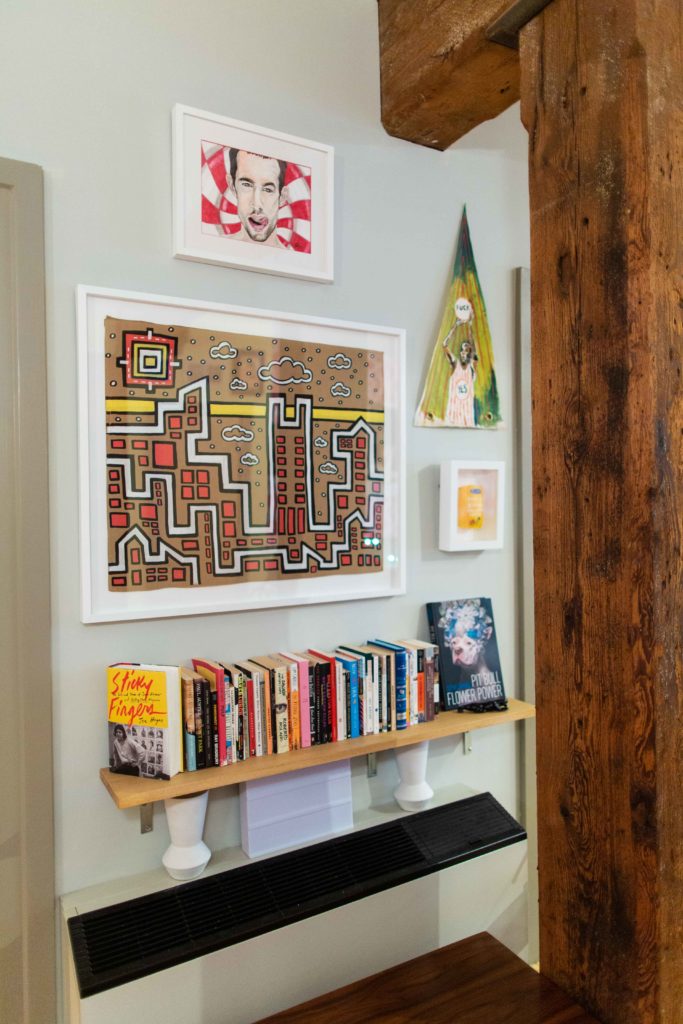
Works by Russell Boyle, Rob Anderson, Peyton Freiman, and Lucy Sparrow. Photo: James Miille.
How would you describe the community you’ve developed through Superfine!—the artists and galleries you’ve worked with regularly, the young collectors you’ve inspired, the other organizations you’ve partnered with, and so on?
The best words I could use to describe the Superfine! community are curious, open-minded, and innovative. On the gallery and artist end, these are either people tired of the status quo, or ones who’ve fortunately not yet had to deal with it. These are both galleries and artists who don’t want to wait around for a big break, and want to take their art business seriously and into their own hands. Superfine! enables them to do that. By not charging an arm and a leg for a booth and providing an outsized marketing and PR package that most of these artists and businesses couldn’t justify on their own, we give them the ability—for a fairly low cost—to build a year-round career around participating in multiple Superfine! fairs. We have artists and galleries who do every single fair and see reciprocal benefits even in their home markets. Their audiences see them traveling the country with us, and respond more eagerly to their hometown shows.
Another component of the Superfine! community is our diversity. Just by being a more fair and transparent option, we see an incredible response from our exhibitors and our general audience. It’s been more of an organic outgrowth of the fair’s approach than something that we’ve forced. More women artists and art entrepreneurs join us at Superfine! than practically any commercial art fair I’ve ever seen, and the same is echoed across artists of color and LGBTQ artists. We believe there’s not only a moral obligation here, but there’s good fiscal sense in building a market that includes all of these groups, as they’re also potential collectors. Too many fairs and the art establishment still use profiling—ageism, racism, sexism—to look at someone and make a snap judgment about whether or not they’re a collector. That’s something we’ve never done, and it shows in our collector base, which is as diverse as our exhibitor list.
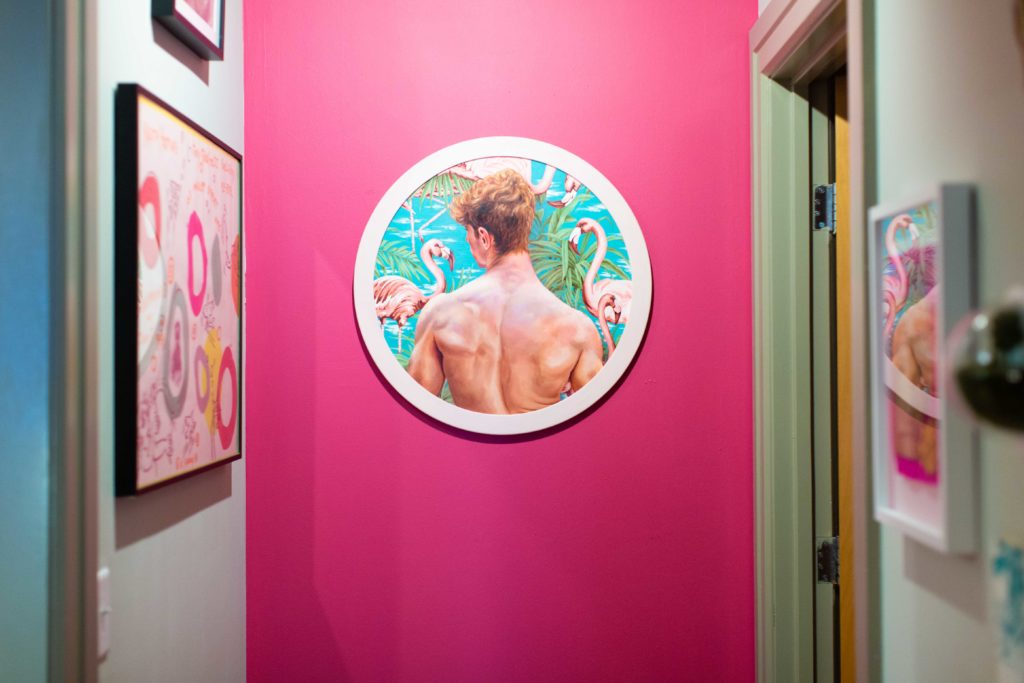
A painting by Oleksandr Balbyshev. Photo: James Miille.
Can you tell me about the collector dinners you host at your apartment and any other events like it?
There are a lot of dishes to do afterwards! All kidding aside, when we moved back to New York in 2017, we’d already hosted a collectors’ dinner at a rented loft in Chinatown and we knew that the space to host events like that was important to us. That’s why we ultimately decided on a large one bedroom loft in the DUMBO neighborhood, where we’ve had community events with as many as 60 to 70 people. The idea behind a collectors’ dinner is to make people feel comfortable and warm around art, and get rid of some of the cold snobbishness that too often pervades art spaces, and doesn’t resonate with a rising generation of collectors who really enjoy vibrant culture. We bring that energy to the fairs as well. A hallmark of each fair’s program is our Young Collectors’ Ice Cream Social. We invite young collectors (whatever that means—I tell everyone that if they think they’re a young collector, they are one!) to join us at the fair and we provide complimentary ice cream from a local ice creamery. In New York, we’ve had Ample Hills and most recently Snow Days. In DC, it was Trickling Springs, and in Miami Beach we had a really cool new place called Dasher & Crank. It’s not just fluff. We see a huge spike in art sales during the ice cream social. I think it’s just reflective of the way we break down barriers and say to people: “hey, this can be a serious pursuit, but it can also be fun.”
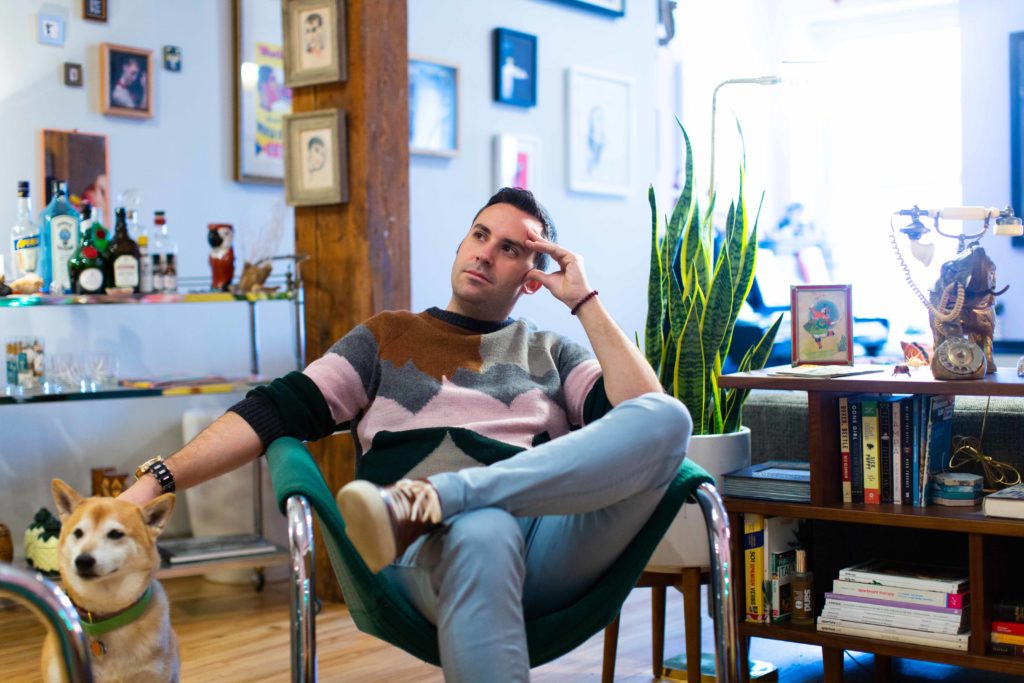
Mitow with the couple’s dog, Coda. Photo: James Miille.
Can you tell me about your collection? How has it changed since you started Superfine!?
Oh wow, it’s undergone a huge evolution since 2015 when we started Superfine! in Miami. Before I met James, I had a few vintage pieces and a few contemporary prints, but we didn’t really kick into full gear until early 2016. We started going down to Mexico City and collecting work from artists there. Then, living in Miami at the time, all of our friends and team members were artists so we started collecting their work. Superfine! and the other fairs we visit open us up to new artists all the time, and Instagram, artnet, and other online properties make it easy to research an artist we’ve just seen somewhere.
In terms of content and quality, I think we’re really coming into our own as collectors. We never regret a piece, but in keeping with our 2019 Superfine! maxim: “Challenge Yourself” We’ve definitely transcended aesthetics and are focusing more on really moving pieces that clearly took the artists a great deal of time and energy and descended directly from their soul. Some recent favorites are a painting by Horacio Quiroz that we bought at Booth Gallery, and a Mark Liam Smith that I collected from Galerie Youn at the Seattle Art Fair.
In the past, people have pigeonholed Superfine! as a purely accessible art fair, and while we’ll always believe fully in creating that bridge for non-collectors to become collectors, our own journey as collectors reflects what we like to see. First, you become bold enough to actually purchase a work of contemporary art for what may be a little beyond your typical comfort zone. Then, as time goes on and your own income level increases, you start to see art as more of a necessary item than a discretionary one. It’s an important component to establishing your own individuality and whether or not you are an artist, bringing art into your home makes your life all the more your own. As this change occurs, you get more comfortable with higher-priced pieces with content that’s also a little more outside your comfort zone.
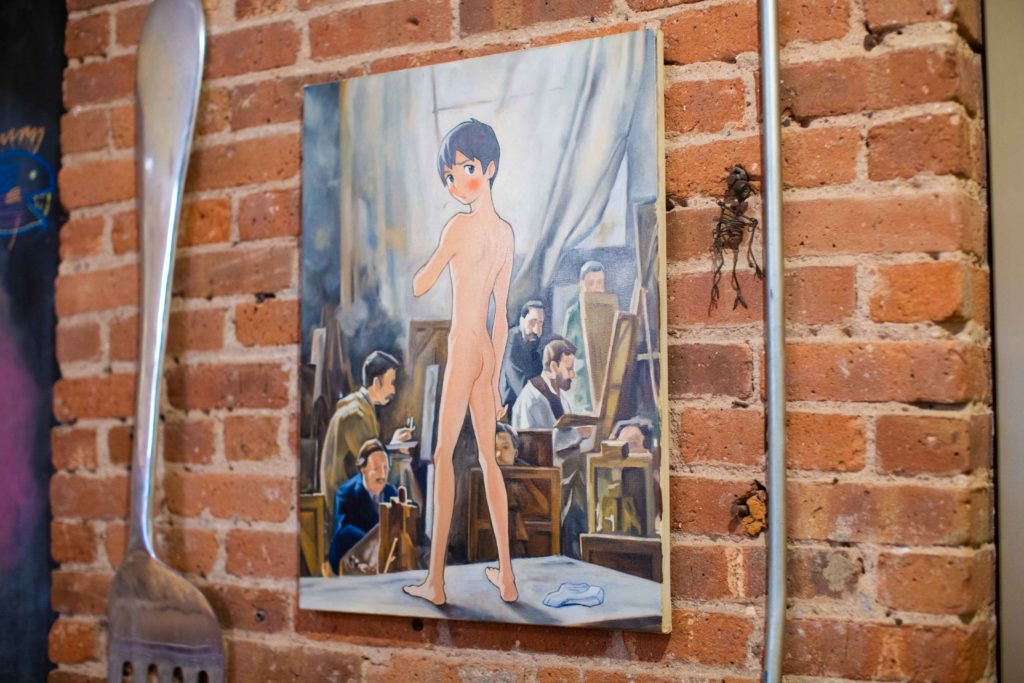
A painting by Naruki Kukita. Photo: James Miille.
How many pieces do you own, if you had to estimate? How many of them came from Superfine! artists or fairs? And are there any that you feel are particularly symbolic of Superfine! or its mission?
I’d estimate we’re up to about 200 original pieces and around 100 prints. Our home is mixed between art, design, and more vintage finds so all told, it’s likely more like 400 different things that we’ve hung. As you can imagine, wall space is key when we’re house-hunting.
We do collect a great deal from our own fairs. It’s hard not to when you’re spending months working directly with these artists and galleries to curate their booths, and are the ones who have spent the most time with the work outside of the artists and galleries. For example, we’ve collected several works by Mark Beard, James Bidgood, and others from ClampArt in Chelsea, who participated in our first New York edition back in 2017. We also recently bought a work by Mexican artist Horacio Quiroz from Booth Gallery, who is currently looking at doing a solo booth of Horacio’s work at Superfine! New York 2019. On the Mexico City front, we also have several works from galería noox, a mobile program with a residency in the Yucatán that’s participated in three Superfine! fairs to date.
I try not to buy art on opening night. I like to give our audience the chance to take the works James and I pick before we do. That happened at Superfine! DC where we both had our eye on a particular small painting by Martin Swift in the Monochrome Collective booth. Someone else swooped it up, which made me happy. If I had in fact chosen “the perfect piece”, someone who believed in our fair and our approach now has it in their home. The curator, Nina, replaced the work with a new one and we bought that one instead. A win-win! Another cool Superfine! DC find for us was a photo by Jan Rattia that we purchased from Cindy Lisica Gallery out of Houston. It’s a man’s stomach with the words “FUCK TRUMP” written in semen. It hangs across from our bathroom and is a nice surprise (and indication of our political leanings) for guests. As Superfine! moves forward and into the “Challenge Yourself” realm, works like this really embody the fair we’re building. We’ve always said our goal is to be accessible yet challenging and that’s where we’re going. We want to show the world that accessible, affordable, approachable art can also be daring, political, and sometimes sexy. It doesn’t have to be a sailboat painting or a photo of lily pads.
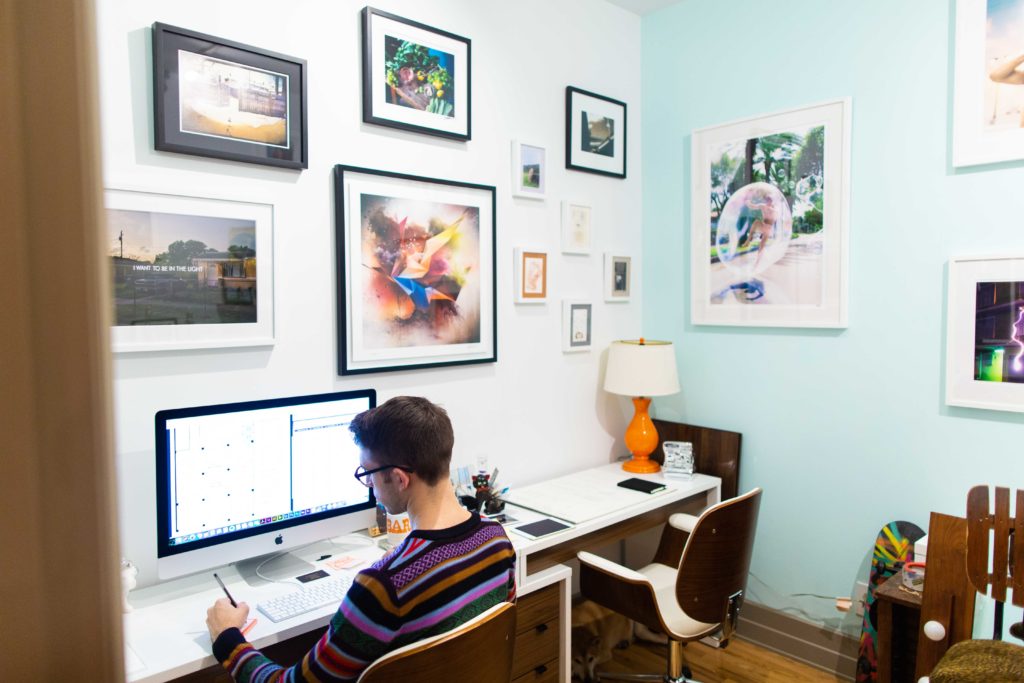
Miille underneath works by Mikael B, Luis Lazo, Mark Reamy, and himself. Photo: James Miille.
Have you received any pushback from the art world since you launched Superfine!?
People in general are often guilty of knowing that things aren’t working, but not wanting them to change. The art establishment is often no different. We talk to hundreds of artists, gallery owners, our own exhibitors, collectors, and the more you look into it, the more you realize that the movement in the art market is happening primarily in the under $5,000 range. This really isn’t a bad thing and innovation is good. Businesses like ours that recognize this and begin to court and respect that market while providing serious value for our paying clients will survive and thrive; sticks-in-the-mud won’t. I think it’s important to recognize this as both an equilibrium and an opportunity. There are excited, eager potential art buyers out there, but they don’t want to be condescended to and they don’t want to start from a place of discomfort. Knowing you can’t buy anything at all at an art show is uncomfortable, and we give you the building blocks to start collecting.
While “the art world” may give us pushback here and there, it’s actually shocking how many individuals who are actually beyond the politics of art really do believe in and support Superfine! and our approach. Of course there are haters, but more often than not, people who’ve been in art for dozens of years as dealers, artists, or collectors really see us as the way of the future and that feels really good to hear. A fresh approach to how this business is done helps collectors, galleries, and artists. By providing a means for them to connect in a clear, transparent way, more sales happen and long-term collectors are built and nurtured.
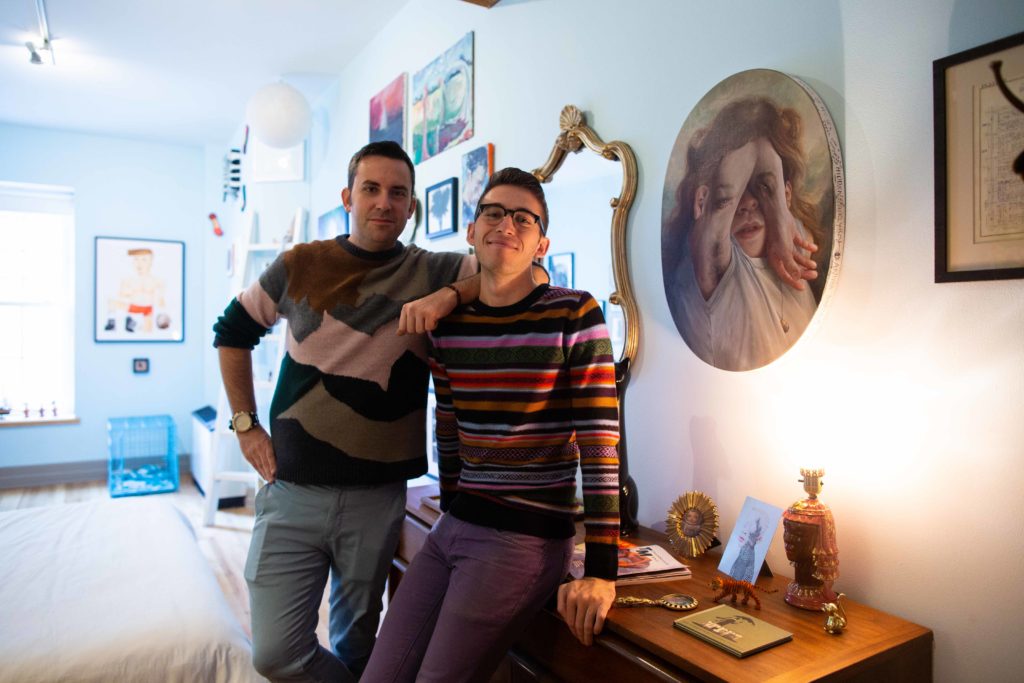
Mitow (left) and Miille at home with a painting by Horacio Quiroz. Photo: James Miille.
LGBTQ art and artists have been part of your identity since the beginning, but it seems like you’re doubling down on this now, making efforts to be even more inclusive and celebratory of the community. Why do you feel it’s important for Superfine! to do that now?
We’re two years into the Trump era and the other day a guy biking down 13th street in Manhattan screamed out “Vote for Trump, faggots!” after getting into an altercation with another group on the corner. We watched it, we were right there. I can’t think of a more important time to give voice to artists who reflect the diversity of this world we all live in than right now. Queer artists who paint or photograph the human body are censored off of social media on a regular basis. It’s an epidemic that nobody outside of that community seems to care about. Art is not pornography and as an art fair, we have the ultimate responsibility to showcase art that celebrates and showcases a community’s struggles, desires, and emotions. Again, sometimes that work may be challenging, but it’s important to see it even if you’re not part of the community itself. That’s also the reason why women artists play a big role in Superfine!. We’re one year after #TimesUp and it’s back in the media again with the new awards season. Taking the whole thing back to actually collecting art, we really feel that for those outside of a particular community, it’s a really important time to consider owning artwork that reflects perspectives outside of your own. By bringing someone else’s artistic voice into your home, their perspective creeps into your own subconscious in what is only a positive way. We can’t afford to insulate ourselves from the lives of others any longer.
Superfine! LA will be on view at Magic Box LA from February 14-17, 2019. Tickets are available here.